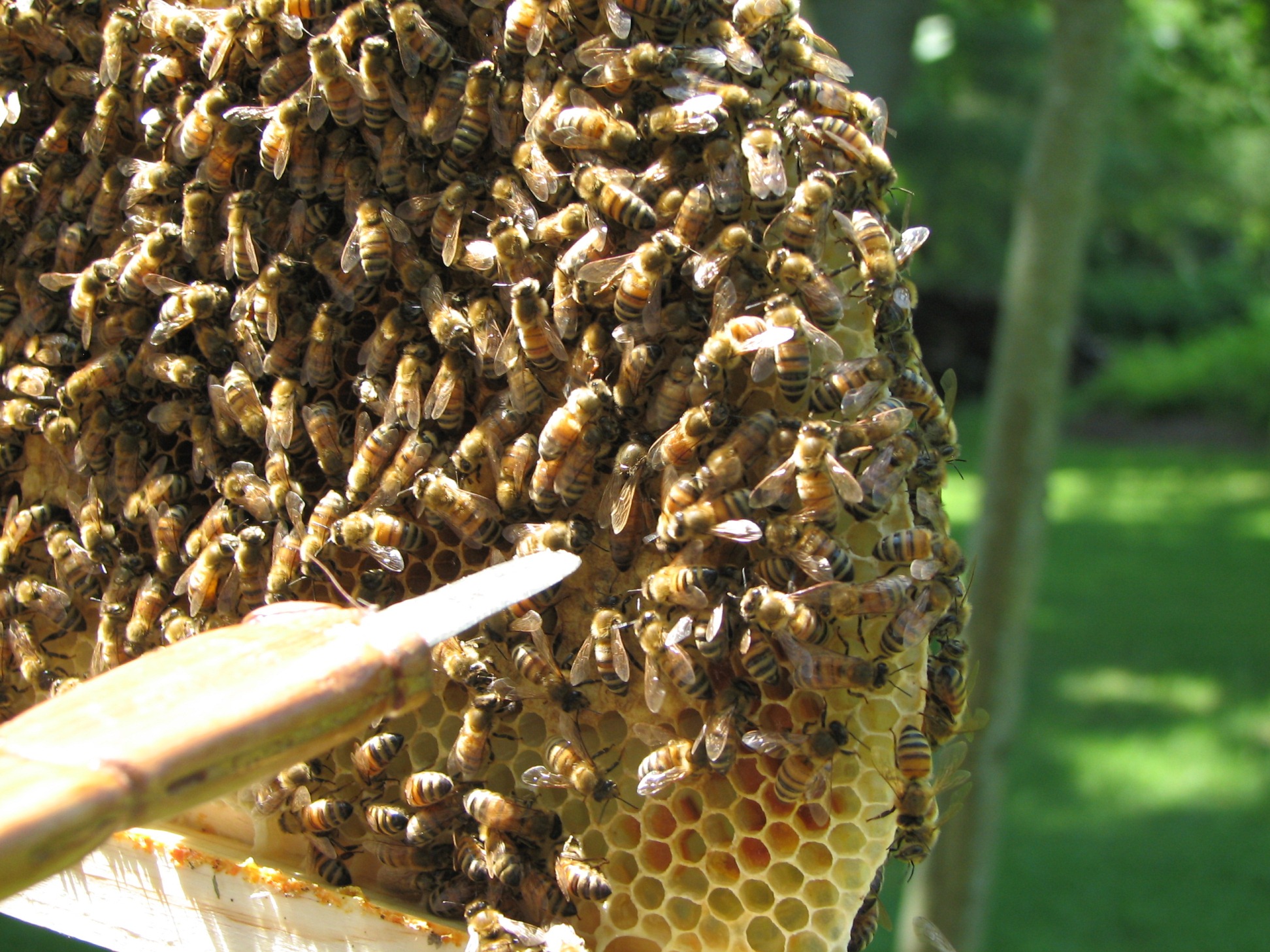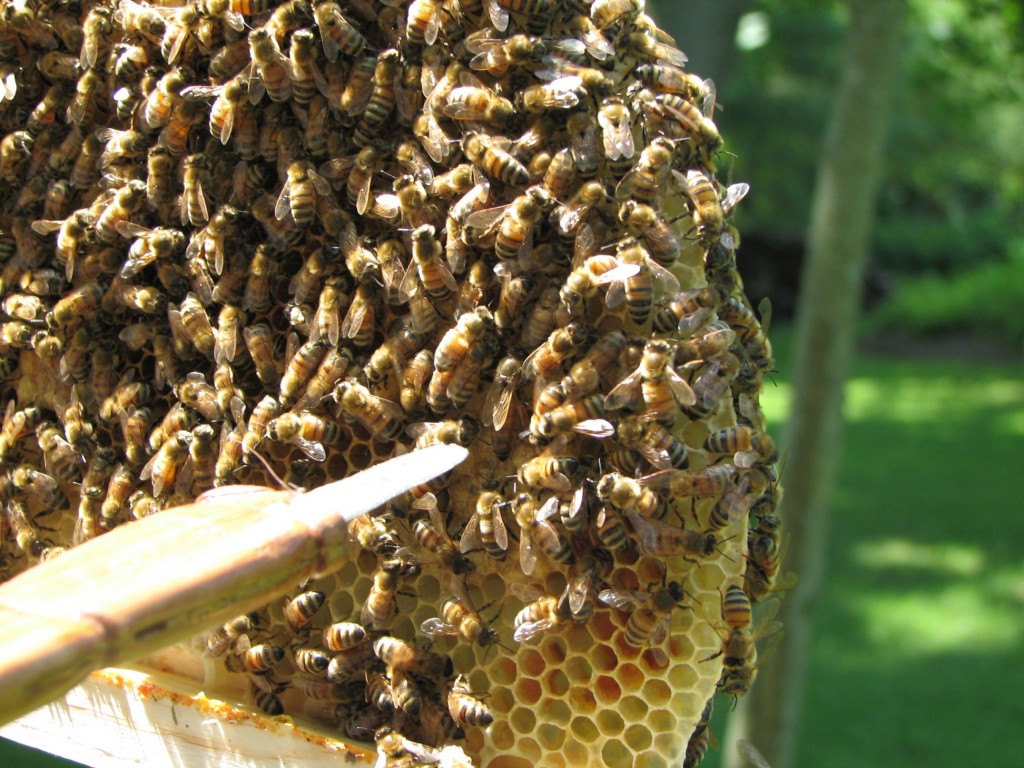This is a frame of brood brushed free of its usual attending nurse bees. I’d brushed the bees off because I removed this frame from the Nicola hive (which lives in my beeyard)—named in honor of Nicola Mason’s first swarm capture—and I’d given it to a hive that currently lives in Nicola’s apiary, the Bebe hive. Why did I make that swap? Because the Bebe hive started out as a tiny, queenless hive and lacked the resources from which to make a new queen.
Giving a queenless colony comb containing either eggs or larvae (4-days old or younger) from another hive allows the bees in the queenless hive to make a queen from the donated eggs or larvae. So, it’s handy when beekeepers have other colonies from which to draw these resources…which is one reason most new beekeepers are encouraged to keep at least two colonies. Without another resource, colonies often fail.
If the Bebe bees choose to make a queen from the frame shown above, then their queen will be the genetic daughter of the queen laying in the Nicola hive…and the entire Bebe colony will eventually take on the characteristics of the very calm and productive Nicola colony.
In the image above, this is what you see (from bottom to top):
- empty cells (in the lower right-hand corner and across the bottom)
- larvae (the “C”-shaped, white, wormy things. It’s called “larvae” until it’s capped)
- capped brood (the lighter the capping, the younger the pupa. Once it’s capped and before it emerges, it’s called “pupa”)
- the empty cells spotting the capped brood? Cells from which young bees have already emerged. And that cell will forever be darker than the cells which never contained brood.
- You see more larvae in the upper left-hand corner. A good-laying queen lays her eggs in a circular pattern starting from the center and working her way out, so it stands to reason that larvae around the edges are in similar developmental stages. Yep, this is a good queen.


